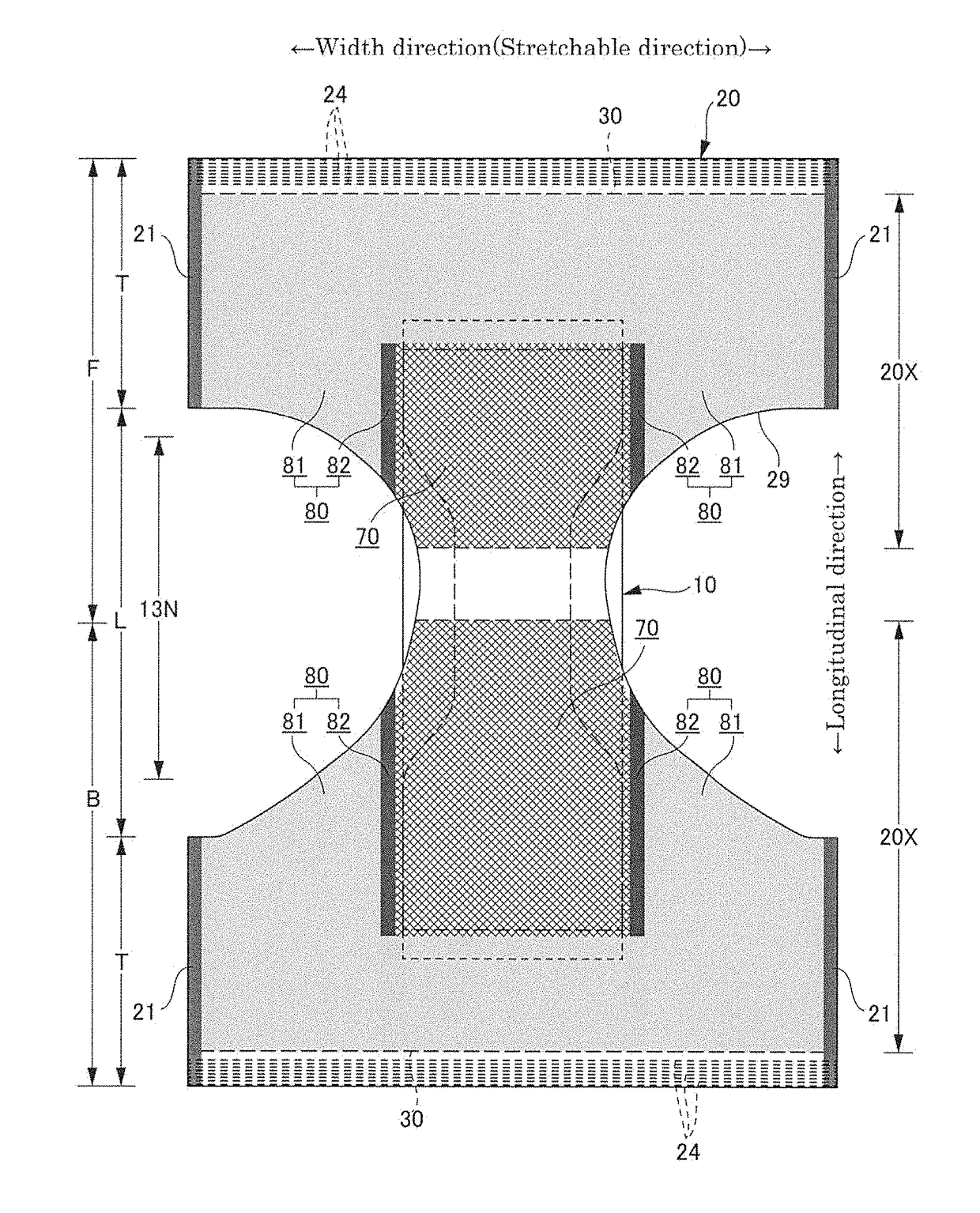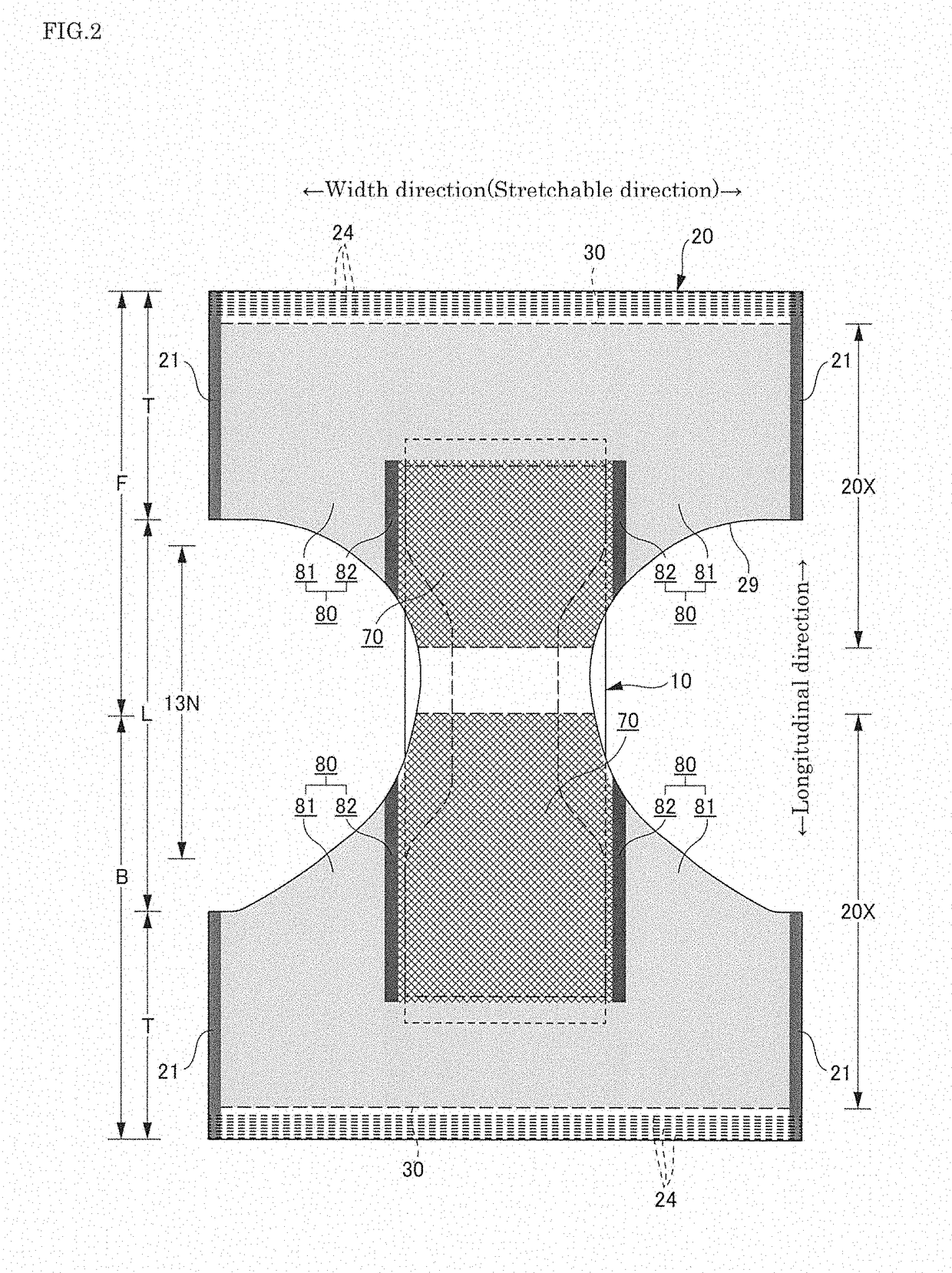Stretch structure for absorbent article, and underpants-type disposable diaper using same
a technology of stretchable structure and absorbent article, which is applied in the field of stretchable structure of absorbent article, can solve the problems that the approach to eliminate the elasticity of stretchable structure including rubber threads by cutting rubber threads, cannot be adopted to the elastic-film stretchable structure, and achieves the effect of increasing the area rate of through holes formed in the elastic film, and increasing the area rate of dot-like joints
- Summary
- Abstract
- Description
- Claims
- Application Information
AI Technical Summary
Benefits of technology
Problems solved by technology
Method used
Image
Examples
Embodiment Construction
[0060]Embodiments of the present invention will now be described in detail with reference to the accompanying drawings. The dots in cross-sectional views represent bonding means, for example, hot-melt adhesive.
[0061]FIGS. 1 to 7 illustrate an underpants-type disposable diaper. The underpants-type disposable diaper (hereinafter simply referred to as diaper) has an outer member 20 composed of a front body F and a back body B, and an inner member 10 that is fixed in a unified manner to the internal face of the outer member 20. The inner member 10 has a liquid-permeable front face sheet 11, a liquid-impermeable back face sheet 12, and an absorber 13 between the front face sheet 11 and the back face sheet 12. The manufacture of the underpants-type disposable diaper involves bonding the back face of the inner member 10 to the internal (upper) face of the outer member 20 with bonding means, for example, hot-melt adhesive (shaded area 10B in FIG. 7); folding the inner member 10 and the oute...
PUM
| Property | Measurement | Unit |
|---|---|---|
| elongation | aaaaa | aaaaa |
| elongation | aaaaa | aaaaa |
| length | aaaaa | aaaaa |
Abstract
Description
Claims
Application Information
 Login to View More
Login to View More - R&D
- Intellectual Property
- Life Sciences
- Materials
- Tech Scout
- Unparalleled Data Quality
- Higher Quality Content
- 60% Fewer Hallucinations
Browse by: Latest US Patents, China's latest patents, Technical Efficacy Thesaurus, Application Domain, Technology Topic, Popular Technical Reports.
© 2025 PatSnap. All rights reserved.Legal|Privacy policy|Modern Slavery Act Transparency Statement|Sitemap|About US| Contact US: help@patsnap.com



